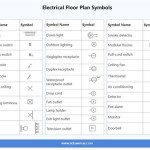Drainage Plans of Your House: A Comprehensive Guide
A well-designed drainage plan is crucial for any house, ensuring the safe and effective removal of rainwater and wastewater. Proper drainage prevents water damage, foundation issues, and other problems that can negatively impact your home’s structural integrity and livability. This article will cover the key aspects of drainage plans, including the types of drainage systems, factors to consider when planning, and essential elements to include in your design.
Types of Drainage Systems
There are several types of drainage systems commonly used in residential properties. Understanding the different options available will help you choose the best system for your specific needs and site conditions:
- Surface Drainage: This system primarily deals with rainwater runoff. It involves directing water away from the foundation through gutters, downspouts, and swales. Surface drainage is essential for preventing water from pooling around your house, which can lead to erosion and foundation damage.
- Subsurface Drainage: This system addresses groundwater issues and prevents basement flooding. Subsurface drainage typically involves installing perforated pipes, gravel, and drainage fabric to collect and divert water away from the foundation. It can also include sump pumps to remove accumulated water.
- French Drains: A specific type of subsurface drainage, French drains use perforated pipes laid in a trench filled with gravel. This system effectively collects and diverts groundwater, protecting the foundation from water damage.
- Stormwater Management Systems: These systems are designed to manage large volumes of rainwater runoff, especially in areas with heavy rainfall. They often involve various components like retention ponds, rain gardens, and permeable pavements to slow down and filter water before it reaches the drainage system.
Factors to Consider When Planning Drainage
Several factors influence the design and implementation of a successful drainage plan. Carefully considering these aspects will ensure that your system addresses the specific needs of your property:
- Site Conditions: The slope of your land, soil type, and proximity to water bodies all play a significant role in drainage planning. Understanding the site conditions will help you determine the most appropriate drainage methods and materials.
- Climate: The amount and intensity of rainfall in your area significantly affect drainage system design. Areas with heavy rainfall require more robust and extensive systems than drier climates.
- Building Design: The size, shape, and location of your house can affect the flow of rainwater and groundwater. The design of your drainage system should be compatible with your building's structure and foundation.
- Existing Drainage: If your property has existing drainage systems, understanding their functionality and limitations is essential for creating a comprehensive plan. You may need to upgrade, repair, or supplement existing systems to achieve optimal drainage.
- Local Regulations: Building codes and regulations vary depending on your location. Ensure your drainage system complies with all applicable regulations to avoid legal issues and ensure safety.
Essential Elements of a Drainage Plan
A well-designed drainage plan will incorporate several key elements that contribute to its overall effectiveness:
- Gutters and Downspouts: These components are crucial for collecting and diverting rainwater away from the foundation. Ensure they are properly sized and installed to handle rainfall volume and prevent overflowing.
- Drainage Pipes: Drainage pipes, including perforated pipes used in subsurface systems, play a vital role in directing water away from the house. Proper installation and sizing are essential for effective drainage.
- Drainage Fabric: This material helps prevent soil from clogging drainage pipes, ensuring water flows efficiently through the system. Properly installed drainage fabric also promotes long-term system performance.
- Gravel: Used in subsurface drainage systems, gravel provides a pathway for water to flow through the system and prevents soil from compacting and clogging the pipes.
- Sump Pumps: These pumps are often installed in basements to collect and remove accumulated groundwater, mitigating flooding risk. Ensure proper installation and regular maintenance to ensure reliable operation.
By understanding the different types of drainage systems, considering key factors, and incorporating essential elements, you can create a comprehensive drainage plan that protects your house from water damage and ensures its long-term stability and comfort.

Residential Drainage Life Of An Architect

Drainage Layout Responsibility Lanes For Drains

Where Can I Find Drainage Plans For My House Soho Real Estate

House Drainage Important Components Used In System

How Do I Find Where The Drains Are On My Property Drain Detectives

Where Can I Find Drainage Plans For My House Soho Real Estate

Self Build House Extension Drains Planning

Drainage Guide Step 3 Plan Layout The French Drain

House Drainage Layout Explanation

Does My House Have Surface Water Drainage Coastal Drains








